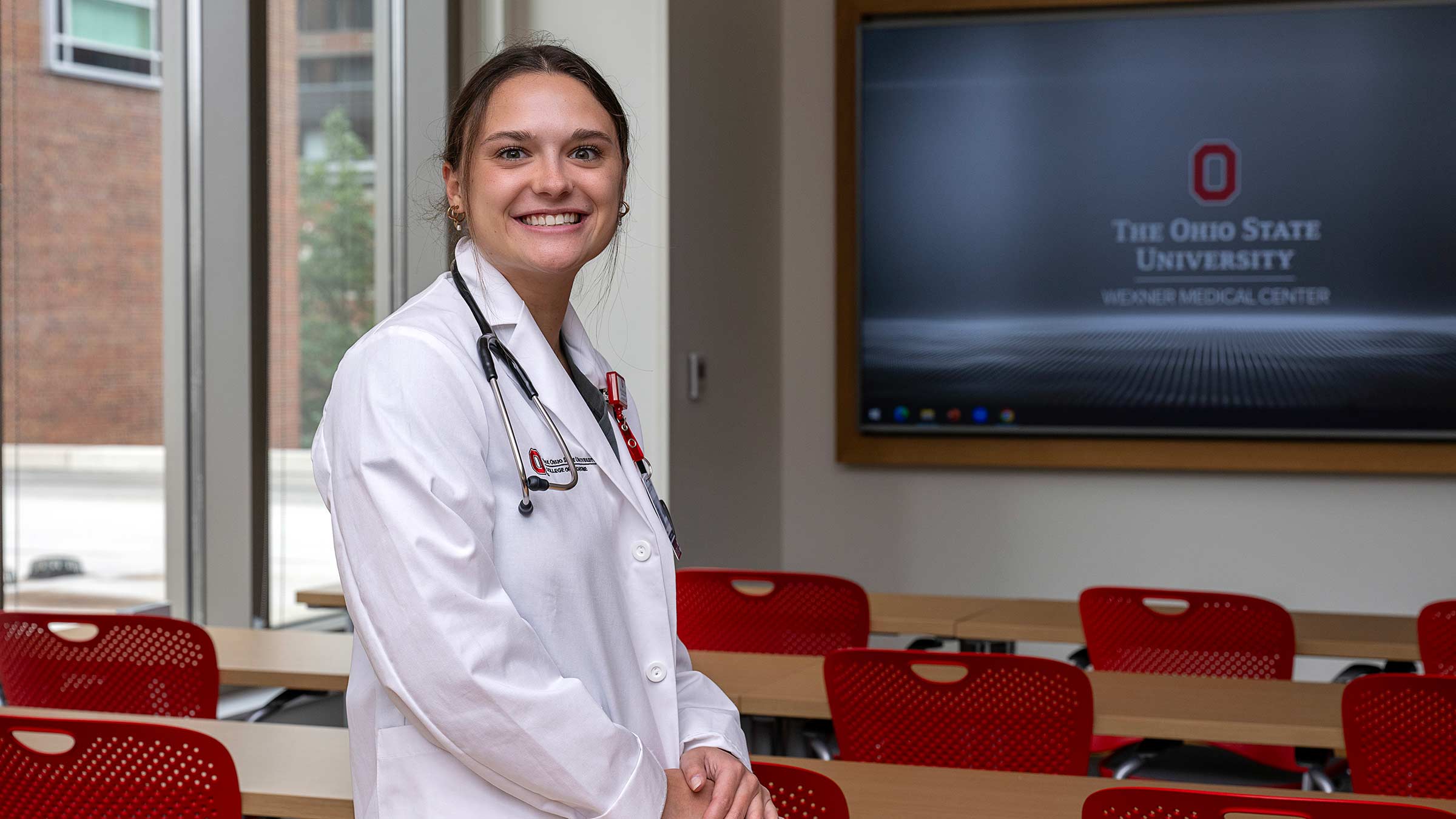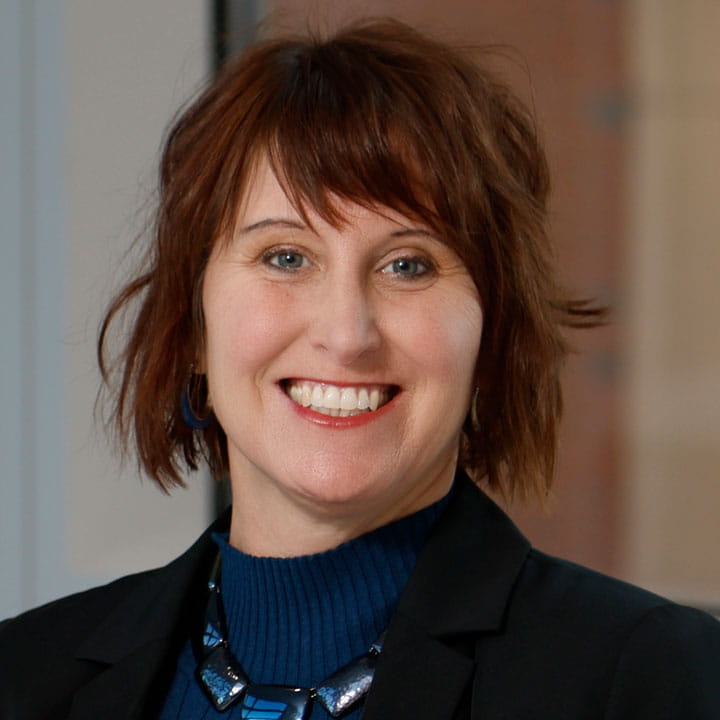Tackling the need to increase doctors in rural communities
Applying to medical school at The Ohio State University College of Medicine was an intentional decision for Ely Roa. Especially when the college announced a new Community Medicine medical degree track (CMT), which aims to prepare medical school graduates for future careers in rural and small community medicine. As an undergraduate student at The Ohio State University at Lima campus, Roa aspired to continue his education in medicine with a community-based focus.
“Lima is the community that shaped me, and I understand firsthand many of the hardships and struggles that come with living in a rural area,” Roa says.
And he knows what it takes to push forward when you grow up with a shortage of guidance. Roa is a first-generation college student and the first person in his family to go to medical school. He also had to work multiple part-time jobs while in school. Yet, he says there were resources available to help him succeed.

“I was able to lean on staff members at Ohio State – Lima and doctors in the Lima community to give me guidance in applying to medical school,” Roa says. “I hope by returning to Lima, I can be one of these guiding hands for other students who come from similar backgrounds as me.”
Bridging the gap in rural health care
Roa just entered the class of 2028 in the first group of 15 students in the CMT program. Roa and his classmates will complete two years on the Columbus campus and the second two years, which include core clinical training, in Lima at Bon Secours Mercy Health — St. Rita's Medical Center. Together, The Ohio State University Wexner Medical Center and Mercy Health (part of Bon Secours Mercy Health) have launched Healthy State Alliance to address Ohio’s most critical health needs.
CMT was launched to expand medical education and training infrastructure into mid-size and rural communities at a time when data from the National Institutes of Health reveals that while nearly 20% of Americans live in rural areas, only 10% of physicians practice there.
Carol R. Bradford, MD, MS, FACS, dean of the Ohio State College of Medicine, says the new program will help reverse this trend and supports the college’s commitment to the land-grant mission and uplifting all of Ohio.
“Partnering with Bon Secours Mercy Health to develop the physician–leaders of tomorrow will help reduce health care disparities in counties across our state and transform the health of all our communities,” says Dr. Bradford.
Ohio and beyond: Creating a new state of health
Jennifer McCallister, MD, associate dean for Medical Education at the Ohio State College of Medicine, says the CMT program pairs Ohio State’s expertise in creating high-level care with Healthy State Alliance’s ambition to improve the health of Ohioans by solving access to care.
“We will arm our students with the skills to connect patients to resources in the community and build relationships that help patients access resources to solve transportation issues and other barriers that patients have to accessing health care,” Dr. McCallister says.
Jane Chakraborty, a first-year CMT student, says her passion for rural health care is heavily influenced by her upbringing in Kansas, where she experienced the complex issues facing access to care in a rural setting. She explains that growing up, she was cared for by providers who seemed to leave her community as fast as they arrived.

Dr. McCallister says provider turnover is due, in part, to providers having had the opportunity to practice in a rural community and then choosing to pursue new opportunities. Single- and two-physician practices experience less turnover than larger practices. Support measures such as extra staffing, development opportunities, department resources and technological innovations increase retention.
Developing as a leader in medicine and playing a much wider role in the community motivated Chakraborty to obtain an education and tailor her training to meet diverse needs of patients in rural communities.
“Being a rural physician is so exciting to me because you are not only seen as a physician but also as a community leader and advocate,” Chakraborty says.
Ensuring quality care for all rural Ohioans
Daniel Clinchot, MD, vice dean for Education at the College of Medicine, says there’s a misconception about rural medicine — that there’s not quality care offered in rural settings. He says this isn’t true and does not address the real fact that not enough physicians practice in rural settings. The CMT program aims to increase the amount of general practice physicians and seeks to train physicians in many specialties to fill crucial needs.
“This program does not limit students to one specialty. Instead, it gives them the opportunity to explore different areas of the field including surgery, emergency medicine and cardiology,” Dr. Clinchot says.
Another incoming CMT learner, Hayley Zimbric, chose the CMT program because it provides an opportunity to practice medicine in smaller communities while still obtaining a high-quality medical education from Ohio State. She says she wants to be more than just a physician in the future, but someone who lives and serves in the same community and interacts with patients and their families outside of the office.
“I’m excited for the chance to help shape this program and make a positive impact on the Lima community,” Zimbric says.

Tailoring medical training to rural communities
In the first and second year of study, CMT learners will be paired with a faculty physician in sites associated with Mercy Health in Springfield, Ohio, to practice the skills needed to become a physician in a clinical environment.
Dr. Clinchot says learners will also develop service-learning skills through a community health education project.
“They’ll identify a service organization in need of help tackling an issue and develop a plan to correct that need. This way they’ll start to build relationships with community members in meaningful ways.”
Another part of the medical school curriculum that will be “uniquely expanded” for CMT learners is the college’s cross-disciplinary practice and learning, called Interprofessional Education (Buck-IPE). CMT learners will have the opportunity to work alongside health professionals like dietitians, nurses and physical therapists.
“You have to rely on your interprofessional team. Relying on others helps expand what you can do for your patients and the health care footprint,” Dr. McCallister says.
The CMT program lets students care for patients in a community like the one they hope to practice in one day, and provides what Chakraborty says is an invaluable experience — working with and being mentored by physicians practicing in this space.
“Rural communities have diverse needs,” Chakraborty says. “And we’ll get to tailor our medical training to reflect those needs.”

The future of medicine is at Ohio State
Our innovative curriculum, life-altering biomedical research and unsurpassed patient care make us one of the top medical schools in the country.
Explore our programs




